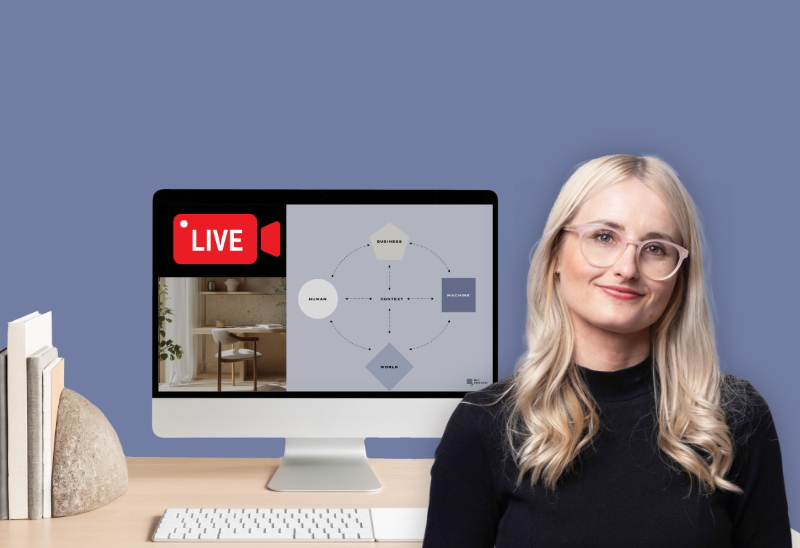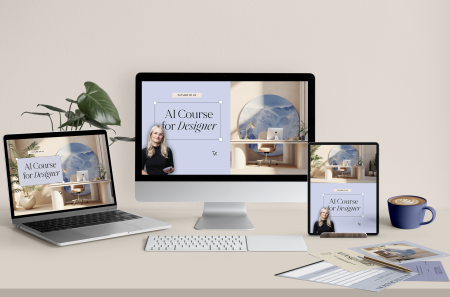🔥 Focus To Build Your Expertise
This article is a summary of the book “The win without pitching manifesto” by Blair Enns. We read this book as book #2 of the UX bookclub (join here) and it was pure gold!
Must read for every creative person! Blair Enns devided the book in 12 easy to understand topics — 12 proclamations. So, let’s don’t loose time but get started! 🦾
The 12 proclamations
1. We Will Specialize
“ Expertise is the only valid basis for differentiating ourselves from the competition. Not personality. Not process. Not price. When the client has few alternatives to our expertise then we can dictate pricing, we can set the terms of the engagement and we can take control.“
a.) Having a sales advantage — By being an expert in a specific field, you are able to qualify clients. By rejecting clients who don’t fit the way you work, you create opportunities for those who do.
b.) Having a premium price — As with doctors who specialize, patients come to us because we are renowned for what we specifically do and not because we are cheap.
2. We Will Replace Presentations with Conversations
Especially as creative people we think that our work speaks for itself. We put a lot of work in our portfolio and share it on Behance, Dribbble and instagram. But what we tent to forget it that although it’s great to show the past and experiences, the future might be different to learn what we need for future clients, we need to talk, we need to have conversations. We need to ask questions, start a dialog, before we present any presentations or proposals.
“Presentation, like pitch, is a word that we will leave behind as we seek conversation and collaboration in their place.“
Blair Enns shared a few quick tips on these topics
a.) Strategy First: We will not develop or share with the client any kind of creative before diagnosing the problem and prescribing and agreeing on a strategy.
b.) Continuous Reference to Strategy: Immediately prior to presenting any creative, we will review the agreed upon strategy with the client.
c.) The freedom to execute: We welcome the client’s input on the strategy, but in exchange we ask him to let us experiment with several ways to implement it.
d) Fewer Options of Better Quality: When presenting creative options, we will limit them to as few as possible. There is an inverse correlation between the quantity of creative options we present to the client and the confidence we have in their quality. When we present options, we will recognize our responsibility to recommend one over the others.
e.) The firm presents its work only to our client companies: If our diagnostic findings, strategic recommendations, or creative solutions are presented to anyone in our client companies, it will be our firm that does so. Presentations (in which one party tries to convince the other to hire it)
Selling, convincing, and persuading are not our objectives. This is simply a means of determining if the fit is good enough to justify a next step.
During the presentation, it is never your job to convince the client to hire you. Our objective is to position ourselves as the “expert practitioner” in the mind of the prospective client. It is important that we establish fit — to see if our expertise matches the client’s needs.
3. We Will Diagnose Before We Prescribe
Before prescribing a solution, fully diagnose the client’s issue.
This means not thinking about solutions before we understand the problem. This one is difficult because designers are trained to look everywhere for problems and solutions, and make decisions quickly. Often, it is merely a first impression and doesn’t solve the problem that the client has.
Blair Enns shared 4 phases in client engagements:
- Diagnose problem/opportunity
- Prescribe therapy
- Apply therapy
- Reapply therapy as necessary
He „says“: A good client will begin to relinquish control once he has the confidence that the expert practitioner knows more than he does, or has the tools to learn more. Formalized diagnostic processes are such tools.“
4. We Will Rethink What it Means to Sell
Generally, there are two basic functions in a creative business, that is:
- Making things
- Selling Things
3 selling steps, based on client’s place in buying cycle
- Help the unaware
- Inspire the interested
- Reassure those who have formed intent
“The very best salespeople are respectful, selective facilitators of change. They help people move forward to solve their problems and capitalize on their opportunities. The rest talk people into things.”
Take the long road of helping future clients, over time, to see that perhaps they do have a problem. Do this primarily through thought leadership — our writings on our area of expertise.
The first thing we need to do is rethink what selling is. It is not about bragging or convincing the client to hire you (a common designer’s assumption) but rather determining a fit between the client’s needs and your skills (your supply).
Replace the art of persuasion with facilitation and to achieve it we should:
- Help the unaware. It is our job not to hate, but to educate.
- Inspire the interested. Fan the small spark of interest into a flame — motivate.
- Reassume those who has formed intent. Build relationships and elevate their trust.
Closing is all about reassuring. When a prospect asks for a written proposal containing free recommendations, his primary motivation is fear of making a mistake. Find other ways to offer reassurance, such as phased engagements, pilot projects, money-back guarantees and case studies.
5. The Four Priorities of Winning New Business
Blair Enns shared 4 little tips on how to win a business:
- Win Without Pitching: “secure the business before it gets to a defined, competitive selection process”
- Derail the Pitch: “… get the client to put his process aside and take an alternative first step with us.”
- Gain The Inside Track: participate in the prospect’s process, but constantly gauge whether prospect is willing to tread you differently and grant the inside track (“inside information or access to hard-to-reach decision makers.”)
- Walk Away: “Good prospective clients who recognize and value our expertise will grant us one of the above.” If a prospect won’t, walk away.
6. We Will Do With Words What We Used to Do With Paper
“We are not trying to talk the client into hiring us, and where we invite him to say no early and often.
If the prospect isn’t committed to a future date or event, then “the written proposal is not the tool to help propel him forward. If the engagement has not yet moved from his wish list to his to-do list, then it is still inspiration he seeks. … We are better off in these cases exploring our previous work for examples of inspiration, or examining with him his competitor’s work or other best practices from further afield.
Sometimes such explorations include a small paid discovery engagement, and sometimes they are merely part of the conversations in the buying cycle.”
“We do not begin to solve our clients’ problems before we are engaged. … Doctors charge for MRIs. Accountants charge for audits. Lawyers charge for discovery. And we charge for our diagnostic work as well … our clients pay us to write proposals via a phased sale that begins with a diagnostic.“
7. We Will Be Selective
”If we are to build a lucrative expert firm then we must regain this balance of a small number of high-quality clients. Once regained, we must accept that our client base will turn over and we must understand that this is healthy.“
Instead of chasing every lead and closing every possible deal we should focus more on choosing clients with perfect fit. We do not lose clients by saying no, but we gain the opportunity to be closer to the right ones.
“We want to develop the habit of putting on the table for early discussion these or any other concerns we, or the client, might have.”
Raise the objections first. Instead of waiting to hear, “You seem expensive,” we might say, “I’m a little concerned about the ability an organization of your size has to afford us.”
8. We Will Build Expertise Rapidly
We already talked about building expertise: Great task for you now. Think about what your area of expertise can be. After deciding your niche in the industry and articulating your claim of expertise in that specific area, we work to quickly add proof to our claim. Adapt a growth mindset, and that continuous learning is mandatory to survive in today’s information age.
“The skills we must possess or acquire in order to succeed in a differentiated creative enterprise are,” in order:
- consulting (problem-solving, advising, leading client through engagement)
- writing (blog, newsletter, published articles, thought papers, books, etc.)
- creative work (often the commodity)
9. We Will Not Solve Problems Before We Are Paid
Our level of expertise, our ideas and solutions “If we do not value our thinking, the client will not. How can we diagnose and prescribe for free one minute, and later ask for hundreds or thousands of dollars for similar thinking?”
“… there is a line that separates proving our ability to solve the client’s problem from actually solving his problem. We shall not be lured into crossing over this line before we are paid.”
State with polite conviction, “It is our policy to not begin to solve our clients’ problems before we are engaged.”
“… we should not progress so far as to share our diagnosis with the client before we are hired and appropriately paid.”
10. We Will Address Issues of Money Early
He says in this book;
„If we were to accept even half of the project work that comes to us, then we would find ourselves aimlessly building a tactical firm burdened by too many small clients and projects, with the commensurate challenges of poorer financial reward and less fulfillment.“
A fresh new project is like a breath of fresh air for builders, makers, & creatives — an opportunity to practice our craft, improve our skills, and thus execute it. However, we tend to discuss it without talking about money.
“Rule of Money: Those who cannot discuss money cannot be doers.“
When you talk about pricing with creatives where I come from, they tend to be uncomfortable or shy. Maybe it’s too stressful. Or culturally, we have become used to the idea that talking about money is considered impolite (especially with family, friends, or co-workers).
It doesn’t matter whether you’re employed or not — you will at some point have to negotiate a raise. Being in business means you cannot avoid the subject of money.
“Rule of Money: Those who cannot talk about it, do not make it”
11. We Will Refuse to Work at a Loss
Many of us believe we are paid for the end-result: the design deliverable, the layout ready for printing, or the tangible product. However, our work began the moment we thought about our client’s problems.
Profit margins are highest in the first two phases (diagnose and prescribe) than in the last two (apply and reapply). Our thinking is the value-added differentiator in the first two phases.
The service we provide is the process that enables good work. As a result, they hired us. The design provided is just a souvenir.
12. We Will Charge More
“… to our clients, the smallest invoices are the most annoying. Through charging more we will create more time to think on behalf of our clients and we will eliminate the need to invoice for changes and other surprises. … Firms like ours are not fired over the large invoices for strategic work; they are fired over the small invoices for tactical work. It is the change order that creates the resentment that builds until the relationship snaps.“
“We must price our upfront work, right up to the first creative deliverable, in big round numbers that end in zeros, and thus clearly imply that our pricing for these services has little to do with the hours it takes to deliver them. For the reapplication work that follows, we are free to charge by the hour.”




